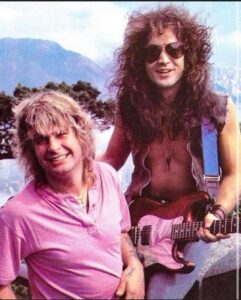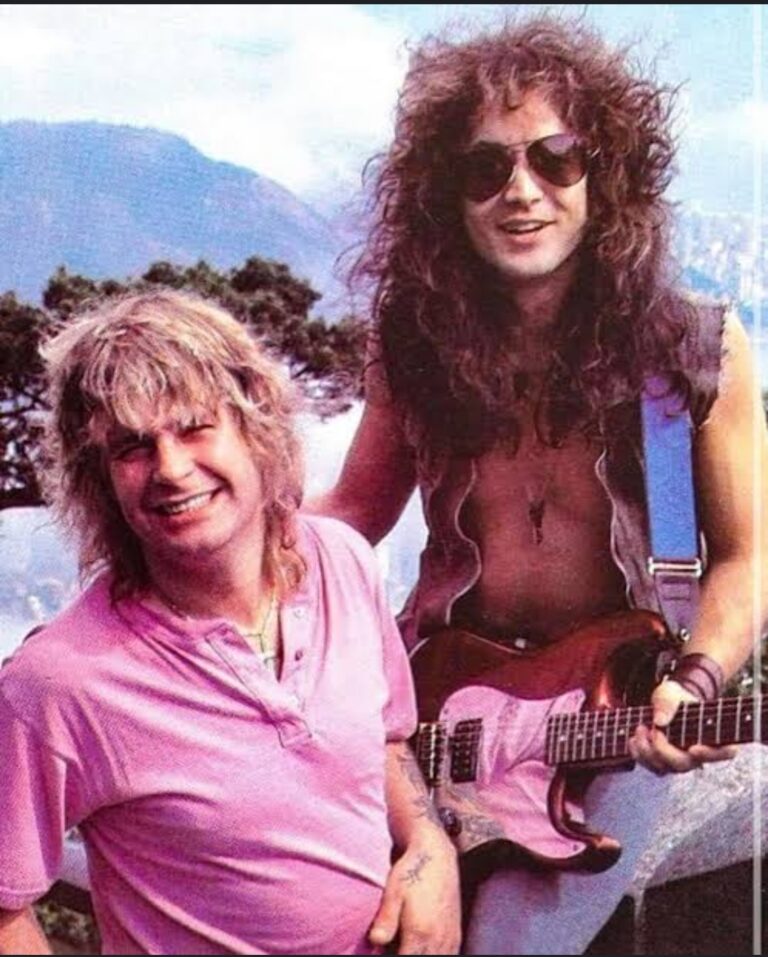In a revealing new interview with Guitarist magazine, legendary guitarist Jake E. Lee pulled back the curtain on the creation of the iconic guitar solo in Ozzy Osbourne’s 1983 hit “Bark at the Moon,” crediting the Prince of Darkness himself for steering the track to its now-iconic status. Lee, who joined Osbourne’s band in the early 1980s, shared a candid story of frustration, spontaneity, and a pivotal moment that not only shaped the song but also transformed him into a better musician.
Lee recounted how he initially envisioned a different solo for the title track of Osbourne’s third solo album. “I had the second half all worked out, and the first half was something completely different in my mind. It was more melodic; more like a Neal Schon thing,” Lee explained, referencing the Journey guitarist’s signature style. Convinced his original idea would work, Lee spent hours in the studio trying to perfect it, much to the frustration of both himself and producer Max Norman. “I was sure it was gonna work. I can still hear it in my head, and I still think it would work!” he admitted.
Enter Ozzy Osbourne, whose blunt intervention changed everything. “Ozzy walked in and said, ‘What the f**k is that?’” Lee recalled with a laugh. When Lee explained he was close to nailing his vision, Osbourne dismissed it outright, urging him to ditch the plan and just “go out there and jam.” Skeptical but willing to try, Lee let loose, and the result was magic. “I think the solo that ended up on the record was my second take of just jamming,” he said. “Ozzy said, ‘That’s it!’ Max said, ‘Yeah, I think that’s it.’ I was like, ‘Really? I didn’t put any thought into it. I’m just sitting here ripping it out. How can that be the solo?’”
The spontaneous, raw energy of that second take became the blistering solo fans know and love today, a defining moment in the song that helped cement Bark at the Moon as a heavy metal classic. Lee’s story highlights Osbourne’s instinctive genius in the studio, pushing his collaborators to think beyond their comfort zones.
Beyond the solo, Lee reflected on how working with Osbourne elevated his craft. Already regarded as a phenomenal guitarist in Los Angeles before joining Osbourne’s band, Lee credits the experience with sharpening his focus and skill. “It was a do-or-die moment. I do see how I got more focused and better at my craft with Ozzy,” he said. “I should have thanked him for that, and during my last talk with Ozzy, I did. He did make me a better guitar player. He made me look at my guitar playing more.”
Looking back, Lee now understands Osbourne’s vision for the “Bark at the Moon” solo. “Now, years later, I can look back and go, ‘I see how that works!’ He made me rethink how to play the guitar. I appreciate that,” he said. The collaboration not only produced a timeless track but also left a lasting impact on Lee’s approach to his instrument.
Fans of Osbourne and Lee are buzzing about the anecdote, which offers a rare glimpse into the creative process behind one of heavy metal’s most enduring anthems. As “Bark at the Moon” continues to inspire new generations of guitarists, Lee’s story is a testament to the power of instinct, collaboration, and the occasional nudge from a rock ‘n’ roll icon to let it rip.
